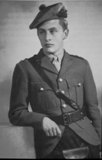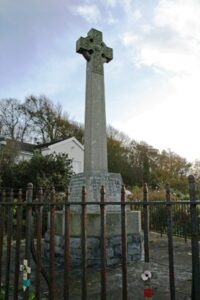Penparcau is a small village situated a mile east of Aberystwyth town centre, lying beneath the Celtic Iron Age hill fort of Pen Dinas, between the River Ystwyth and the River Rheidol. The men of the village who fell during the Great War are commemorated on the village War Memorial, which sits within Neuadd Goffa, the Memorial Hall. The photograph of the memorial is courtesy of Gil Jones.
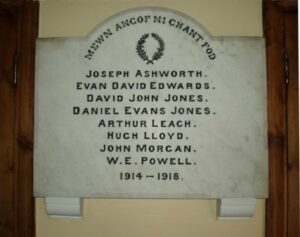
The Great War, 1914-1918
Joseph Ashworth, Private, 235132, Lancashire Fusiliers. Joseph was born in Manchester in 1890, the son of Joseph and Sarah Ashworth. His father was a lithographic printer, and had moved the family to Aberystwyth prior to the war, residing at 4, Southgate, Penparcau. Joseph had trained as a reporter with the Cambrian News before taking up employment with the Rochdale Times. Joseph enlisted at Rochdale into the 16th Battalion, Lancashire Fusiliers in November 1916 and left for France in the early part of February 1917, where it was attached to 96 Brigade, 32nd Division. He was killed in action 10 March 1917 on his first visit to the trenches. Joseph was 26 years old, and is commemorated on the Thiepval Memorial, France.
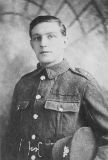
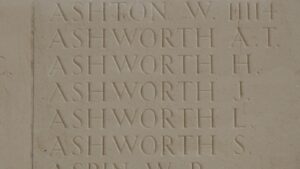
Evan David Edwards, Private, 64068, Machine Gun Corps. Evan was born at Tregaron in 1897, the son of Elizabeth Edwards. Elizabeth was widowed by 1911, and lived with Evan at Shop Dyffryn, Llanbadarn. Evan enlisted at Aberystwyth into the South Wales Borderers on 13 December 1915. He went to France on 10 July 1917, where he was posted to the 228th Company, Machine Gun Corps, which was attached to the 39th Division. He joined the Company at Ypres. Evan was only with his new unit for two weeks, before he was wounded. He died of his wounds at Poperinghe on 24 July 1917, aged just 19, and is buried at Gwalia Cemetery, Belgium.
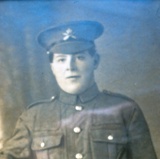
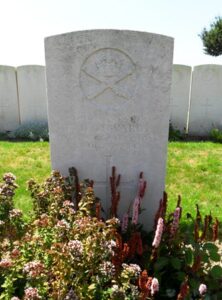
Daniel Evans Jones, MM, Private, 3015, Welsh Guards. Daniel was born in 1891, the son of Richard and Margaret E. Jones, Glanyrafon, Llanbadarn Fawr. He enlisted at Aberystwyth into the 1st Battalion, Welsh Guards, which had been raised by Royal Warrant of 26 February 1915, at White City. On 18 August 1915 the Welsh Guards landed at Havre, joining the 3rd Guards Brigade, Guards Division, and saw their first action at the Battle of Loos. Daniel didn’t join the battalion until sometime after the Somme Battles of 1916. He would have fought at the Battle of Pilckem Ridge in August 1917, and at the Battle of Cambrai later that year. The Guards had a hard time at Gouzeaucourt over the winter of 1917-18, but after the launching of the great offensive on 21 August 1918, the Guards took part in the drive towards the Hindenburg Line. Once the Hindenburg Line had been broken, the Allies swept eastwards, and the Guards fought at the Battle of Cambrai, and the Battle of the Selle and the Sambre. Daniel was badly wounded during the fighting around Cambrai, and was evacuated for treatment. He died of his wounds on 14 October 1918, aged 27, and is buried at Delsaux Farm Cemetery, Beugny, France.
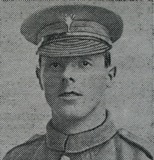
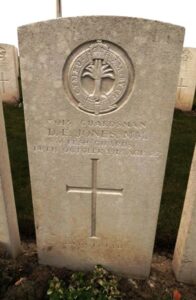
David John Jones, Able Seaman, J/21319, Royal Navy. David was the son of David Jones, of Holmhurst, 5, Rheidol Terrace, Penparcau, Aberystwyth. David served with the Royal Navy aboard HMS Q7, a Q ship, which was an armed merchant ship, with concealed weaponry, designed to counter the U boat threat. David was 20 years of age when he drowned as his ship was sunk on 13 March 1917. He is commemorated on the Plymouth Naval Memorial, Devon.
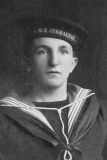
Arthur Leech, Corporal, 53826, King’s Liverpool Regiment. Arthur was the son of Jane and Jane Leech, of Manchester, He resided at Aberystwyth for several years prior to the war with his grandparents, and had married Gertrude Annie Leech. The couple lived at Sunny Deane, Powell Street, Aberystwyth with his wife and child. Arthur enlisted into the Royal Field Artillery in 1916, and was posted to France in May 1917, where he was transferred to the 4th Battalion, King’s Liverpool Regiment. The battalion was attached to 98 Brigade, 33rd Division, at Arras. The Division had fought at the Battle of the Scarpe and at Bullecourt, before heading to Ypres, and fighting at the Menin Road and at Polygon Wood later that year. They were still in Flanders when Arthur was killed in action on 17 March 1918, aged 26. Arthur is buried in Dochy Farm New British Cemetery, Belgium.
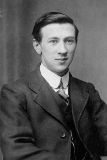
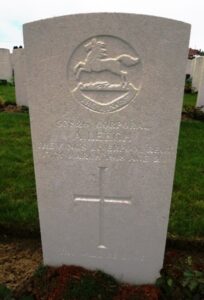
Hugh Lloyd, Lieutenant, King’s African Rifles. Hugh was born in 1890, the son of Edward and Sarah Lloyd, of Parcyllyn, Llanbadarn. He worked in London as a Bank Clerk prior to the war, before enlisting into the Motor Machine Gun Corps. Hugh landed in East Africa on 16 March 1916, probably serving in an armoured car unit, operating against the German forces in East Africa. He was commissioned into the 1st/3rd Battalion, King’s African Rifles on 27 April 1917. Sadly Hugh took ill, and died in Africa on 19 July 1917. He was 27 years old, and is buried at Dar Es Salaam War Cemetery, Tanzania.
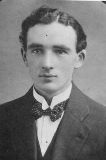
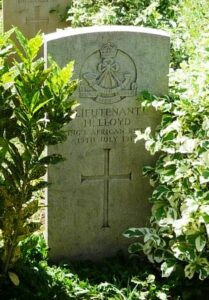
John Morgan, Able Seaman, R/3446, Royal Naval Volunteer Reserve. John was born on 17 September 1880, and resided with his wife Elizabeth, at 28 Glenrafon Terrace, Trefechan, Aberystwyth. He enlisted into the Pembrokeshire Yeomanry on 9 December 1915 and was transferred into the Royal Naval Volunteer Reserve on 11 July 1917. On 6 August 1917 John was sent to France amongst a number of reinforcements for Nelson Battalion, which was attached to the 63rd (Royal Naval) Division. The Royal Naval Division had moved from Arras to Ypres, where it took part in the assault on Passchendaele Ridge. John was shot in the arm during the assault on Passchendaele, and was evacuated to the 47th Casualty Clearing Station, where he died of his wounds on 13 October 1917, aged 37. John is buried there, at Dozinghem Military Cemetery, Belgium.
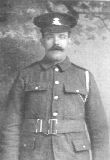
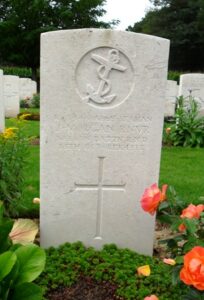
William Edward George Pryse Wynn Powell, Lieutenant, Welsh Guards. William was born on 8 March 1899, the son of Captain E.A.L. Powell, of Nanteos, Llanbadarn. He was commissioned into the Welsh Guards, and by the summer of 1918 was in command of King’s Company, 1st Battalion, Welsh Guards, which was attached to the 3rd Brigade, Guards Division. On 8 August the Australian Corps advanced towards the town of Villers Brettoneux and won a mighty battle there against the Germans, thus turning the war. On 21 August the British launched an attack on the Somme, and the Guards Division fought here at the Battle of Albert, and then pushed east towards Bapaume. From here on the Allies had the upper hand, and moved towards the Hindenburg Line, where the Guards Division fought at the Battle of Havrincourt and the Battle of the Canal du Nord. Once the Hindenburg Line had been broken, the Allies swept eastwards over territory that had been occupied by the Germans for four long years. The Guards fought at the Battle of Cambrai, helping drive the Germans back across the Rivers Selle and Sambre in the coming weeks. In one of the last actions fought by the Welsh Guards in the Great War, on 6 November 1918, they had been tasked with capturing the village of Amfroipret, and nearby Bavai. William was killed during the attack on Amfroipret that day. He was originally buried at Buvignies, but his grave was moved after the war to the larger Maubege-Centre-Cemetery, France.
